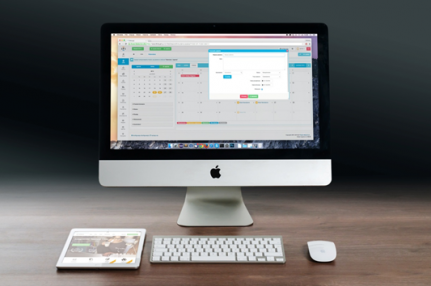
I apologise in advance if this is a bit technical but another major time saver. And we all know time saving = more revenue earning time.
In today’s technological era we have a wide variety of options to stay connected to our documents, contacts and other related elements while on the go. Accessing our data can be done by an array of methods, from portable hard drives, cloud storage and sharing to remote desktop.
So when I read up about it, I sew that Remote desktops, formerly known as Terminal Services Client, has been around for a few years with integrated release with operating systems like windows XP and several upgrade versions thereafter that supports remote access to files, programs and remote printing and running off a user machine.
Remote Desktop is Microsoft’s neat way of allowing you to ‘Remote In’ to your computer when you’re away from it. A Remote Desktop is a graphical interface developed by Microsoft to connect a computer over a network connection to another computer.
This means you can access your computer from wherever you are, on any device, even mobiles (which works surprisingly well to be honest). I was surprised to see that this wasn’t a mere IT function as I long held in belief.
In essence remote desktop creates a seamless integrated environment wherever you are saving time while still giving your valuable clients the attention and information they deserve. And we all know time saving easily translates into saving revenue.
It’s great to be able to access your powerful work computer from anywhere without having to carry your laptop or include all your files on your expensive MacBook pro with your huge hard drive.
Using remote desktop means you can get away with having a relatively low spec laptop or tablet because all the ‘power’ you need to do stuff is done by your ‘big’ computer back at the office, or your home office. Provided you have a stable network connection.
To get setup you’ll need to setup Remote Desktop client, global app setting, manager user accounts and file hosting settings. To be honest I will recommend a technical person to assist with the setup and maintaining thereof as it does get extremely technical.
In the end, you want to make it easy for your employees to utilise the tool to its full advantage. Rather do it right the first time to avoid being bogged down with setup protocols and Remote Desktop applications that will take up some time to set up.
I’ve used it for about 10 years, yes it takes a bit to get setup and yes you need your ‘big’ computer to be windows but once its setup, you don’t need to touch it. It just works. It’s worth the initial investment.
There are several Remote Desktop applications available. The top five applications include UltraVNC, Windows Remote Desktop, Teamviewer, TightVNC, and Logmein. Your choice will depend on whether you utilise a Windows, Linux or Mac Operating system.
It can be a fairly pricey exercise so you need to explore your options and choose a suitable application to your requirements.
I personally prefer Teamviewer which is better for the smaller companies or home based offices and consultants. It is a technological answer but at a reasonable cost.
The application is extremely stable and you do not require a huge IT team to manage it.
So a lot of people will argue that you have cloud computing these days which will most likely replace Remote Desktop protocols. This in essence is not the case as the cloud was never intended to replace Remote Desktop Principles. Clod is great for storage but not for performing support for instance.
Remote Desktop Principle is the functionality of giving you access to specific desktops, files or programs remotely and not the same as moving your IT management or files to or a mass hosting facility to the Cloud.
Personally, I feel that the Remote Desktop Protocols are a lot safer and better to my required needs. I do not have to be heavily invested to be on the move as it is easy to communicate to my big Microsoft computer at my office any time without the major security risks.
I PROMISE this is the only Email Sign up box I use, there is no silly catches, it’s a very simple notification style email that will simply notify you when I post more Mistakes I Made or How I Make Sales or Advice That Did Nothing for Me.
No Spam, No Junk. Unsubscribe Anytime. Promise.